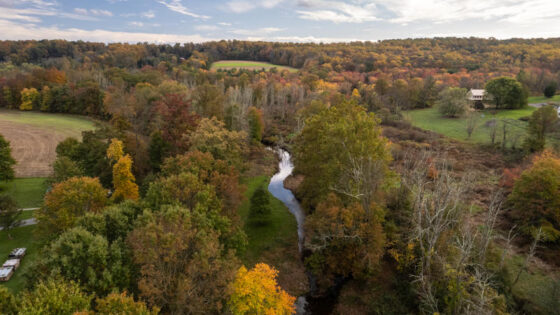Sweeney, B.W., and J.D. Newbold. 2014. Journal of the American Water Resources Association 50:560–584.
Abstract
This literature review addresses how wide a streamside forest buffer needs to be to protect water quality, habitat, and biota for small streams (≤~100 km2 or ~5th order watershed) with a focus on eight functions: (1) subsurface nitrate removal varied inversely with subsurface water flux and for sites with water flux >50 l/m/day (∼40% avg base flow to Chesapeake Bay) median removal efficiency was 55% (26-64%) for buffers <40 m wide and 89% (27-99%) for buffers >40 m wide; (2) sediment trapping was ~65 and ~85% for a 10- and 30-m buffer, respectively, based on streamside field or experimentally loaded sites; (3) stream channel width was significantly wider when bordered by ~25-m buffer (relative to no forest) with no additional widening for buffers ≥25 m; (4) channel meandering and bank erosion were lower in forest but more studies are needed to determine the effect of buffer width; (5) temperatureremained within 2°C of levels in a fully forested watershed with a buffer ≥20 m but full protection against thermal change requires buffers ≥30 m; (6) large woody debris (LWD) has been poorly studied but we infer a buffer width equal to the height of mature streamside trees (~30 m) can provide natural input levels; (7, 8)macroinvertebrate and fish communities, and their instream habitat, remain near a natural or semi-natural state when buffered by ≥30 m of forest. Overall, buffers ≥30 m wide are needed to protect the physical, chemical, and biological integrity of small streams.



